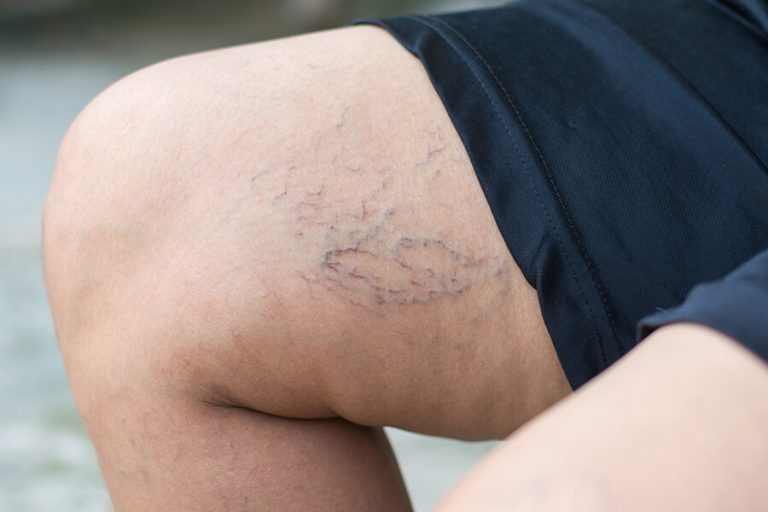Spider Vein Treatment And Angioplasty
Spider veins are small, dilated blood vessels that appear as red or blue lines on the skin, often on the legs. While they are typically harmless, spider veins can be unsightly and cause discomfort or pain. Angioplasty is a minimally invasive procedure that offers an effective and safe treatment option for spider veins.
Understanding Spider Veins
Spider veins occur when the valves in the veins become weak or damaged, allowing blood to pool and dilate. They are often caused by:
- Genetics A family history of spider veins can increase your risk.
- Hormonal Changes Hormonal fluctuations, such as those during pregnancy or menopause, can contribute to spider veins.
- Lifestyle Factors Factors such as obesity, prolonged standing, and smoking can increase the risk of developing spider veins.
Symptoms of Spider Veins
Spider veins may not cause any symptoms other than an unsightly appearance. However, some individuals may experience:
- Aching or Heavy Legs Pain or discomfort in the legs, especially after prolonged standing or sitting.
- Swelling Swelling in the legs or ankles.
- Itching Itching around the spider veins.
The Role of Vascular Surgeons
Vascular surgeons are medical professionals who specialize in the diagnosis and treatment of conditions affecting the blood vessels. They offer a variety of treatment options for spider veins, including angioplasty.
- Diagnosis Conducting a physical examination and using imaging techniques to assess the severity of spider veins.
- Treatment Planning Developing personalized treatment plans based on the patient’s goals and preferences.
- Performing Angioplasty Performing angioplasty procedures to treat spider veins.
Angioplasty for Spider Veins
Angioplasty is a minimally invasive procedure that involves using a small catheter to inject a sclerosing agent into the affected vein. This causes the vein to collapse and disappear.
- Procedure The procedure is typically performed in a doctor’s office or outpatient clinic. A local anesthetic is used to numb the area, and a small incision is made in the skin. A thin catheter is inserted into the vein, and a sclerosing agent is injected. The vein then collapses and is gradually absorbed by the body.
- Recovery Recovery from angioplasty is typically quick and involves minimal downtime. Most patients can resume their normal activities within a few days.
Benefits of Angioplasty for Spider Veins
Angioplasty offers several benefits for individuals with spider veins:
- Minimally Invasive Angioplasty is a less invasive procedure compared to traditional surgical options.
- Quick Recovery Shorter recovery time and minimal downtime.
- Effective Results High success rates in treating spider veins.
- Minimal Discomfort Angioplasty is typically a painless procedure.
Alternative Treatments for Spider Veins
In addition to angioplasty, other treatment options for spider veins include:
- Sclerotherapy Injecting a sclerosing agent directly into the spider veins to cause them to collapse.
- Laser Therapy Using laser energy to destroy the spider veins.
- Endovenous Laser Ablation (EVLA) A minimally invasive procedure that uses a laser to close the affected vein.
Factors to Consider
- The appearance of the spider veins
- The severity of the symptoms
- Your personal preferences
- The cost of the treatment
Preventing Spider Veins
While there is no guaranteed way to prevent spider veins, certain lifestyle changes can help reduce your risk:
- Maintain a Healthy Weight Excess weight can put strain on the veins in your legs.
- Exercise Regularly Regular exercise can improve circulation and strengthen the leg muscles.
- Avoid Prolonged Standing or Sitting Take breaks and move around to prevent blood from pooling in your legs.
- Wear Compression Stockings Compression stockings can help improve circulation and reduce swelling.
The Importance of Following Up with a Vascular Surgeon
Regular follow-up appointments with your vascular surgeon are essential for monitoring your progress and addressing any concerns.
- Assessing Treatment Results Evaluating the effectiveness of the treatment and making adjustments as needed.
- Preventing Recurrence Taking steps to prevent the recurrence of spider veins.
- Addressing Underlying Conditions Addressing any underlying medical conditions that may contribute to the development of spider veins.
Angioplasty is a safe and effective treatment option for spider veins. By seeking care from a qualified vascular surgeon, individuals can improve their appearance, reduce discomfort, and enhance their overall quality of life. With advancements in angioplasty techniques and technology, individuals can now benefit from minimally invasive procedures that offer minimal downtime and excellent results.


